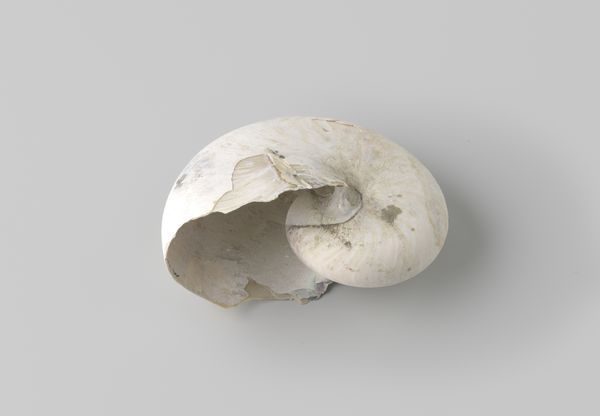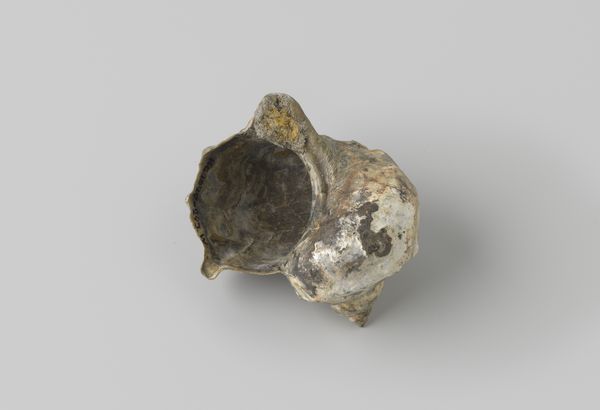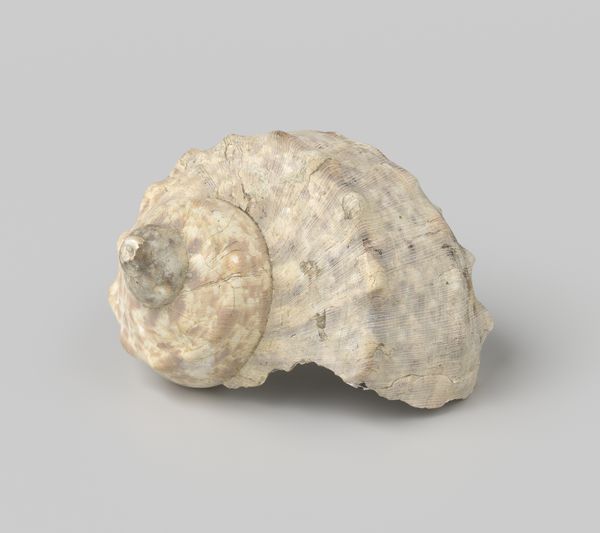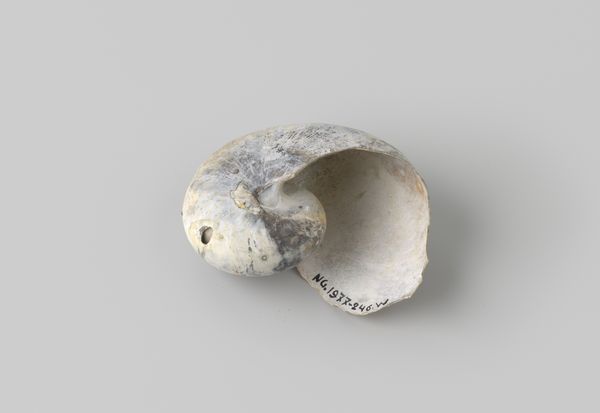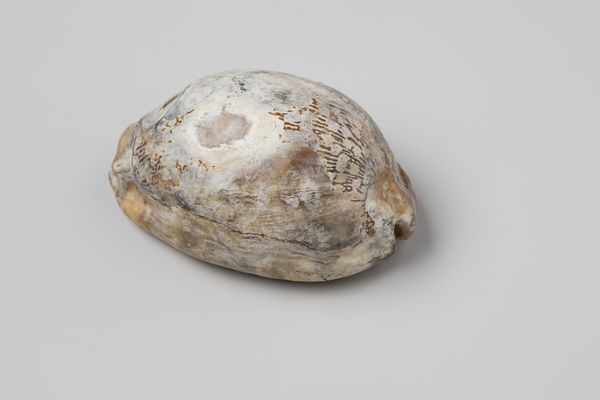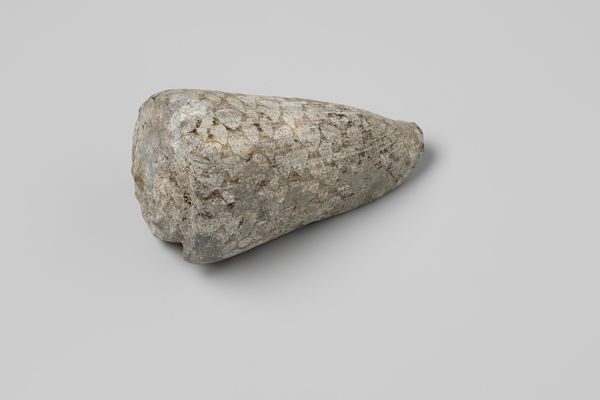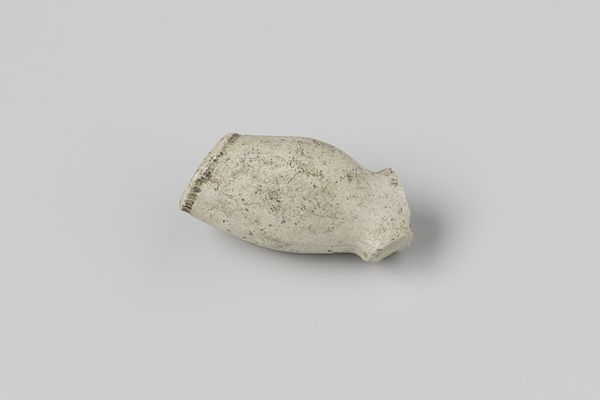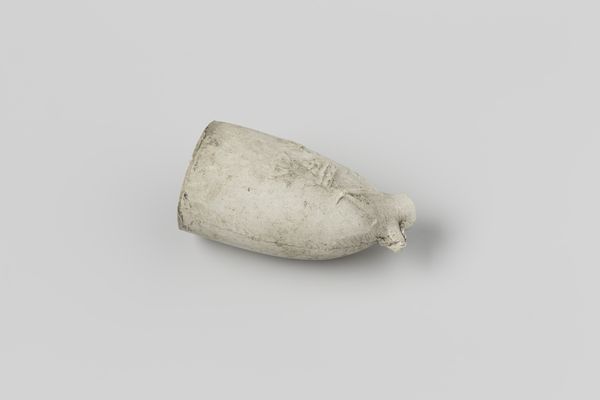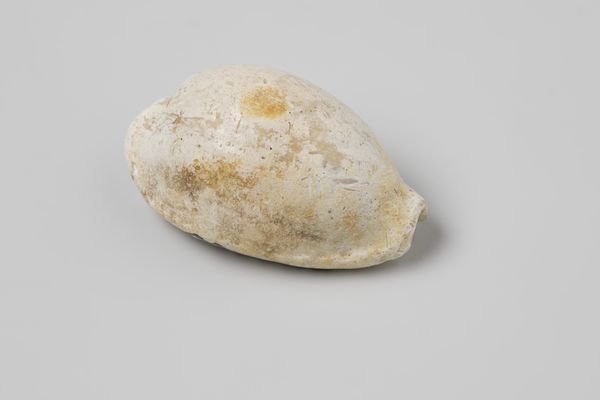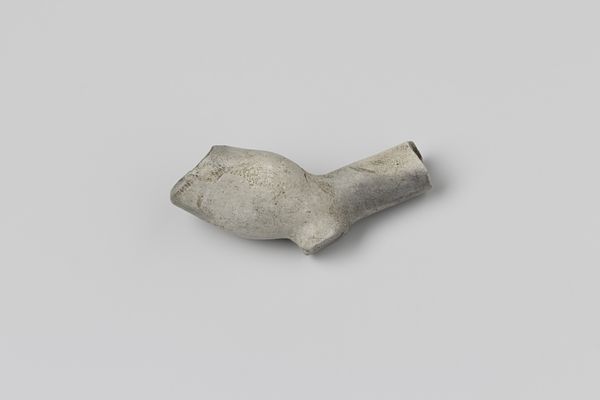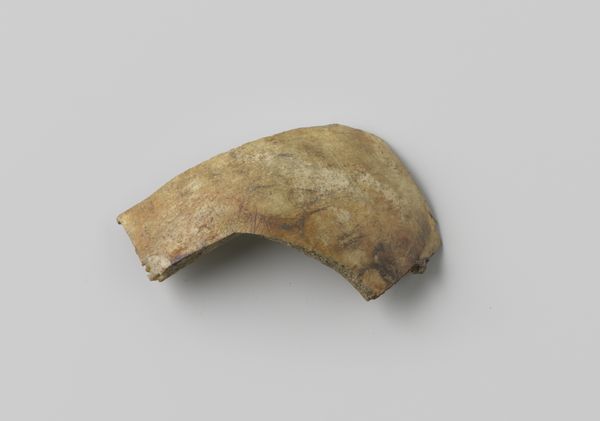
Nautilus pompilius shell from the wreck of the Dutch East India ship Witte Leeuw before 1613
0:00
0:00
found-object, sculpture
#
found-object
#
ancient-mediterranean
#
sculpture
#
naturalism
Dimensions: height 7.5 cm, width 12.5 cm, depth 8.3 cm
Copyright: Rijks Museum: Open Domain
Editor: Here we have a Nautilus pompilius shell from before 1613, which was recovered from the wreck of the Dutch East India ship Witte Leeuw and is now housed in the Rijksmuseum. It's striking how something so seemingly simple carries such a weight of history. What stands out to you about this object? Curator: For me, the nautilus shell speaks volumes through its symbolism. The spiral is, of course, the primary image: the endless symbol of life, growth, and the journey of the soul. Its presence on a ship that met a violent end evokes ideas about human ambition against nature. Do you notice its damaged state? Editor: Yes, the damage gives it a very visceral quality. Curator: Indeed, this also contributes to the layers of meaning we can unravel from this artifact. A perfect nautilus already signifies completion, evolution… the golden ratio. But this broken shell disrupts those concepts. This shell’s survival—despite being found on a shipwreck, tells of persistence and adaptation. Can you feel the dichotomy? Destruction, creation... Editor: I think I can. I hadn't thought about the contrast before, between the inherent perfection of the shell's geometry and the brutal reality of its history. Curator: Precisely! Think of the journey it represents— from a living creature in the Indian Ocean to a valuable commodity on a doomed ship, and finally an artifact in a museum. Each phase imprints itself on the shell, contributing to its narrative. The marks from time— the missing pieces and discoloration-- are reminders of not only physical change but of the echoes of human activities. What feelings arise for you from that? Editor: It's incredible to consider all the layers of history contained within this single object. It really shifts how I think about found objects in museums. Curator: Me too. Everyday items can reflect grander schemes and ideas. It shows how historical artifacts can unlock rich layers of meaning when we analyze their symbolism and history.
Comments
No comments
Be the first to comment and join the conversation on the ultimate creative platform.
